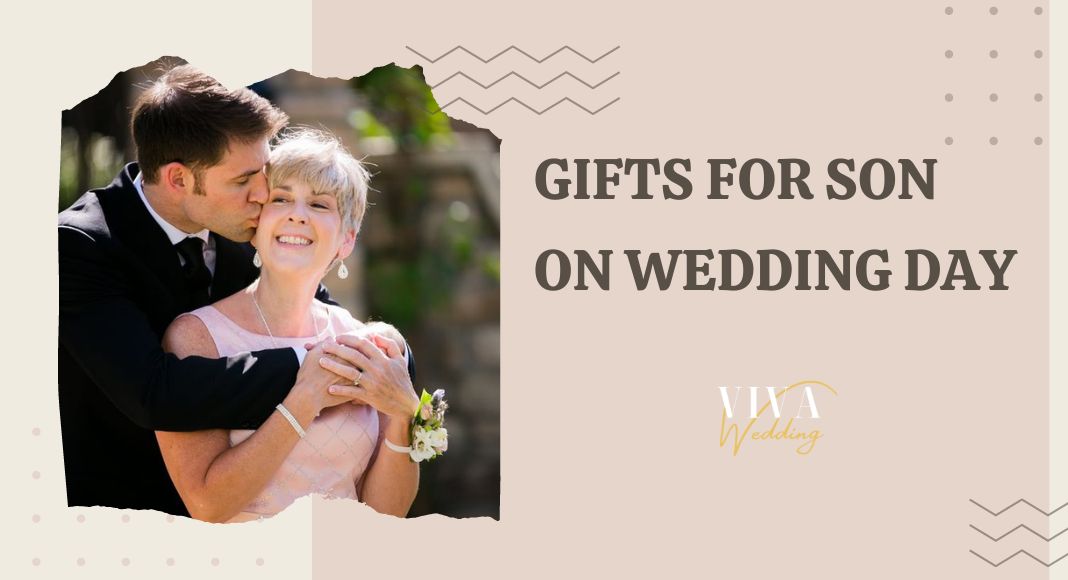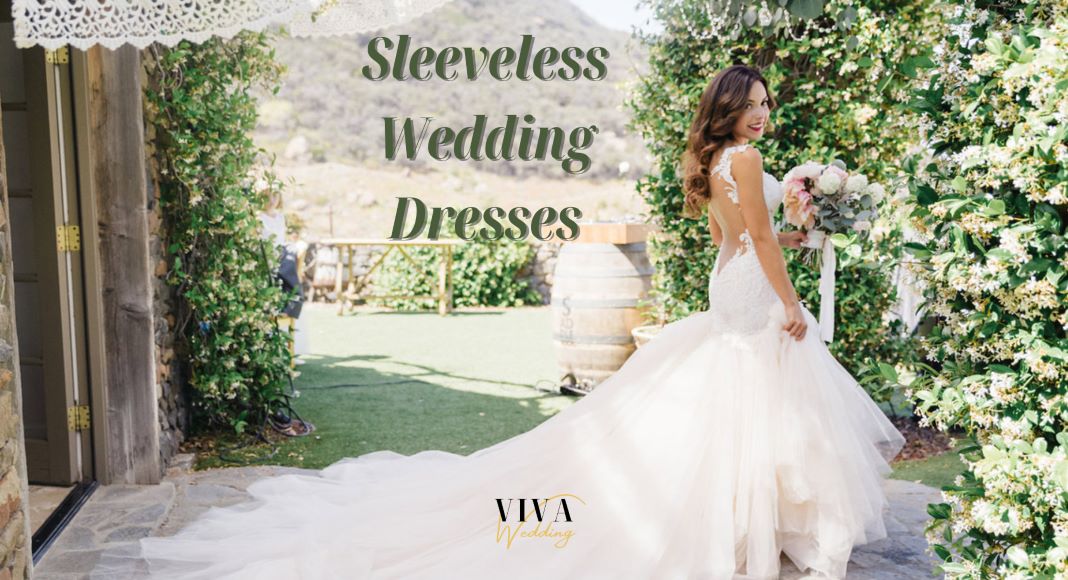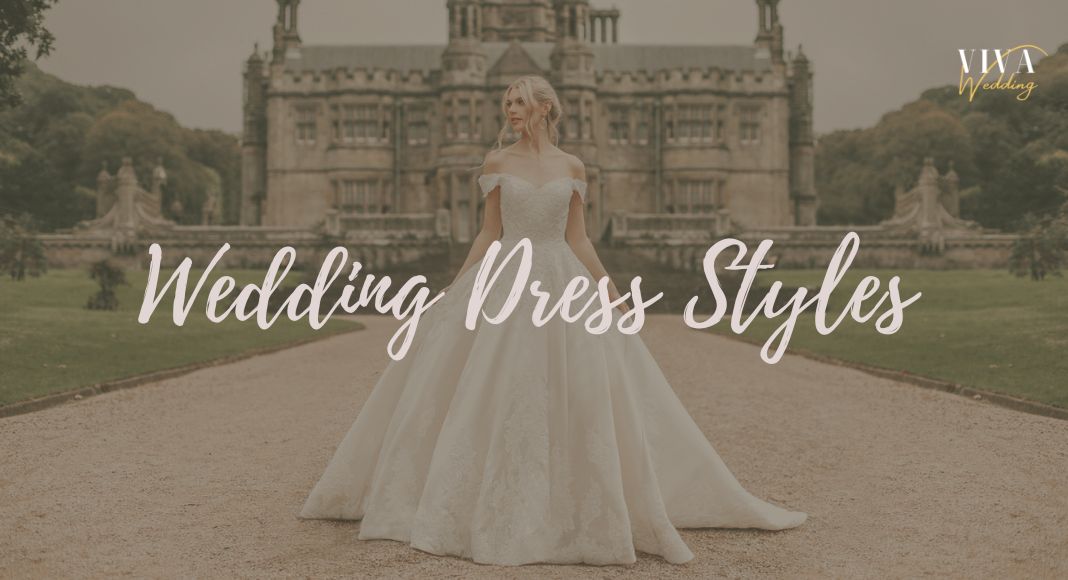Your wedding reader offers you and your spouse a fantastic service, making your big day more memorable and enjoyable. Giving gifts to readers at wedding is a thoughtful way to thank them for their valuable time. Hence, Viva Wedding Photography has put together a list of great ideas that make them happy and memorable. Read on to get inspired!
What Is A Wedding Reader?

A wedding reader is an honored guest who has been asked to deliver a special poem, a story, a parable, or religious text during the nuptials. Readers are usually selected for weddings based on their close relationship with the couple or their skill in delivering the chosen reading. They could be articulate individuals who are part of your close family or close circle of friends, or they could be experts in their respective fields.
The reading represents the couple’s ideals, beliefs, and love story, and might have a religious, literary, or personal focus. Some couples choose to have a reading or two at the reception, although this usually spills over into the role of the toast-giver, usually a bridal party member.
What Are Wedding Readers Responsible For?
The role of the wedding reader is important and symbolic. These individuals will add depth and feeling to the celebration by reading excerpts or poetry they have carefully selected. Their primary role in your wedding is to make an impression on the guests and establish an atmosphere of affection for the couple, so those present can feel connected to their love and ideals.

Having readers at your wedding ceremony might set a more introspective, spiritual, or emotional tone for the occasion. Everyone in attendance will feel closer to the couple who tie the knot and their journey as a result of the speeches made.
In addition, the presence of readers at a wedding symbolizes the potential for balance that arises when divergent aspects, such as families, cultures, and rituals, are brought together. The combined effect of their presence and participation enhanced the ceremony, making it an occasion to be remembered favorably by everybody.

However, being a wedding reader still be a challenging task, especially when it comes to speaking in front of a large audience. It is essential to select the best man to assume responsibility for this job. If you’re overwhelmed with wedding planning as the wedding season approaches, we recommend seeking guidance from a trusted wedding blogger or consulting with an expert for valuable advice.
Therefore, giving wedding readers a gift is a great way to show your gratitude for all their contribution to your wedding day. It’s up to you when to give wedding reader gift, but it’s a good idea to get a little something on your list (and check it on gift etiquette) and make your gift more memorable.
List of 30 Thank You Gifts For Readers At Wedding
Personalized Gift Ideas For Readers At Wedding
1. Customized Keychain

Giving each reader a personalized acrylic keychain with their engraved initials will be an excellent way for them to keep as the perfect gift idea for readers at your wedding ceremony. The keychain is a high-quality acrylic circle with a tassel and keychain in the color of your choice, so there is a wide range of customization for each reader.
What we love:
- High-quality materials: premium acrylic
- Perfect size and compact
- Wide range of customization options: sizes, colors, and other elements
Reference price: $12,00 on Etsy
2. Customizable Wood Pocket Knife

Pocket knives will come in handy in various situations other than hunting, hiking, and multiple tasks. They are turning one of the durable knives into a long-lasting keepsake by having their engraved name or wedding day on it. Moreover, keeping the blade secure when it is open is also a top consideration, so you should include a frame lock in your custom pocket knife.
What we love:
- High-quality materials: stainless steel blade and high-quality wooden holder
- Perfect size and compact
- Pocket clip included
- Rust resistant
- Durable and Stylish
- Wide range of customization options: sizes, colors, and other elements
Bonus tips: Since we placed a high consideration on product safety, the custom pocket knife is equipped with a frame lock that secures the blade in the open position. Pushing the knife’s frame lock to the side closes the edge.
Reference price: $148,54 on Etsy
3. Thank You Card

No matter which gifts for readers at wedding you choose, small or expensive, including a thoughtful hand-written card will be a great way to show your appreciation for their contribution to the success of your wedding. Moreover, a wax seal stamp with their engraved initials on the cover will make them feel even more special than usual.
What we love:
- High-quality materials: premium paper and durable wax seal
- Wide range of customization options: sizes, colors, and other elements
4. Personalized Tumbler Cup

Looking for something extraordinary to give readers at a wedding? A personalized tumbler cup bearing their name would be a welcome addition to their everyday utensils. Each reader with unique preference, so you need to consider choosing the perfect size, color, and their favorite engraved words.
What we love:
- High-quality materials: premium permanent vinyl and stainless steel
- High durability of the decal
- Double-walled tumbler keeps drinks hot or cold-no condensation
- BPA Free
- Many customization options: colors and fonts
Reference price: $22,99 on Amazon
5. Wooden Sign

The reader’s assistance in making your wedding day special should be appreciated by how deeply they value your relationships. So, to remind them of your wedding day, give them a unique and high-quality wooden house sign or any space they see fit. Moreover, you can add memorable quotes or messages to complete your perfect gift ideas for reader at wedding.
What we love:
- High-quality materials: premium air-dried English Oak
- Stunning flawless finish
- Perfect size and compact
- Thicker and stronger for stability and long life.
Bonus tips: The wood should be treated with external oil once a year after being pressure washed or sanded to remove moss and other debris.
Reference price: $20,17 on Etsy
6. Pink Grapefruit & Rosemary Candle

Candles are usually pleasant and thoughtful thank-you gifts for wedding readers. Their home or office will smell wonderful since grapefruit and rosemary are excellent combinations that they will enjoy to freshen the air. Since these wellness-inspired fragrances are made with essential oils, you can customize each candle jar’s scent to match different readers’ preferences.
What we love:
- High-quality materials: premium and long-lasting wax
- Nature energizing grapefruit & rosemary
- Clean burn: 45 hours
- Blended with coconut and soy wax
- Natural rubberwood lid becomes a decorative base
- The 3-wick candle features wicks made with natural fibers
Reference price: $24.99 on Amazon
7. Engraved Flask

Consider giving your reader this item as a personalized wedding favor if you know they will be sipping alcoholic drinks during the ceremony. A line, date, name, or picture may be added to this stainless steel matte black flask to create a unique keepsake for them to cherish forever.
What we love:
- High-quality materials: premium stainless steel and PU leather cover
- Perfect size: Rectangular
- 100 % leakproof: The tight seal of the cap ensures that none of your beverages will be lost to the void
- Fashion & versatile: Non-slippery durable PU leather
- Environmental protection, non-toxic, anti-corrosion, anti-rust.
Reference price: $13,92 on Amazon
8. Heart-shaped “Thank you” Cookies

You can’t go wrong get a gift for people who help you make your big day so special with these delicious handmade cookies. It’s a nice way to say “thank you” to your wedding reader. Although they might not be lasting memories, they’ll enjoy them during the ceremony. The cookies may be customized with a wide range of your message or any unique words to surprise them.
What we love:
- High-quality ingredients: flour, butter, free-range eggs, sugar, vanilla, edible food color
- Easy to make
- Wide range of customization options: sizes, colors, and other elements
9. A Beautiful Wooden Photo Frame

Capture your favorite moments with your readers and tell a story by framing any photographs you may have taken to turn them into a perfect gift for your ushers. These frames are a classic style that would complement a variety of decors. It’s one of the most sentimental thank you gifts for wedding readers that preserve memorable memories for a long time.
What we love:
- High-quality materials: premium glass cover and wooden frame
- Perfect size and compact
- Includes four well-built wooden frames
- Attached are metal sawtooth wall hangers for gallery-style wall mounts
- The mounting board is a durable MDF wood to keep your photos looking great
Reference price: $24,68 on Amazon
10. Personalized T-shirts

Personalized “Thank you” T-shirts are a popular way to express appreciation for the wedding readers’ contribution because they allow you to create one-of-a-kind wedding gifts for guests. Select a line (phrase), color, and size to add a special touch to your gifts.
What we love:
- High-quality materials: premium 100% cotton
- For everyday smooth, comfy tee
- Slim fit
- Many options to custom: sizes, colors, and fonts
Reference: $24.70 on Red Bubble
>>> Recommend reading: The Most Delightful Spring Wedding Favors Ideas In 2024
Modern Gifts For Wedding Ceremony Readers To Spruce Up Their Home
11. Truck and Barn Farmhouse Wall Art

This graceful canvas is the best way to express gratitude to your readers. They may display it proudly in their houses as a memento of their time with you. Give them these sentimental gifts for wedding ceremony readers to show them how much you mean to them and make them feel special.
What we love:
- High-quality materials: premium canvas frame
- Perfect size and color printed
- Many options to custom: sizes, colors, and fonts
Reference price: $129.95 on Ohcanvas (The biggest size)
12. Wine Glasses Set

The perfect wine deserves an ideal vessel, so get ready to elevate the elegance of your home and host the ideal wedding parties with these colorful wine glasses as thank you gifts for wedding readers. These elegant hand-crafted glasses fulfill both goals with exquisite detail, adding a hint of color to any table, dinner, or party.
What we love:
- High-quality materials: premium Italian-style glass
- Feature the tall, sleek silhouette
- Perfect size and excellent visibility
- Excellent hand-blown style and vibrant colors
- Perfect for serving any alcohol
Reference price: $69.95 on Amazon (Set of 6)
13. Beautiful Autumn Canvas

This stunning canvas print is one of the thoughtful gift ideas for readers at wedding. Personalize it by uploading an image of their favorite or a picture with you from the wedding. So, you will thank them for helping bring people together at your celebration.
What we love:
- High-quality materials: premium canvas frame
- Perfect size and excellent color visibility
- Giftable for any event
- Many customization options: sizes, colors, and fonts
Reference price: $129.95 on Ohcanvas (the biggest size)
14. Wine Holder

Gifting a wine rack as a small token of your appreciation to someone who loves wine is typically an excellent idea. Since the unique design of this wine container, it makes a fantastic piece of home decor. A chrome-plated iron wine holder made by a master craftsman, making it is undoubtedly the ideal gift for the wedding reader of your life.
What we love:
- High-quality materials: premium stainless steel
- Floor mount or tabletop
- Perfect-size wine bottle rack: hold up to 7 bottles
- Unique geometric honeycomb design: prevent your bottle of wine from slipping out and breaking
- More resistant to bends, scratches, and fading than others and more durable.
Reference price: $22,89 on Amazon
15. Garden Stone

This customized garden stone is a way to thank your wedding reader for their kind words, which they will cherish for the rest of their life. It is unquestionably one of the best thank you gifts for wedding readers that will never go unnoticed.
What we love:
- High-quality materials: premium resin, polyresin, sand
- Perfect size and compact
- Customizable with up to 10 scripted names attached to a flower
- Using UV printed method
Reference price: $19,99 on Etsy
>>> 35 tips about gifts for wedding planners to show your gratefulness can be found on this blog!
Practical And Thoughtful Gifts For Wedding Ceremony Readers
16. Gift Card

Many people opt to give their wedding readers a personal gift card and a thank you note as part of their wedding reception. Providing a gift card that your reader may spend anywhere, for example, or giving something more customized, are also options you might consider.
Listed below are some examples of different types of gift cards that you can consider giving to your wedding reader:
- Local coffee shop
- Spa in the neighborhood
- Restaurant
- Gas card
17. Lotions And Manicure Set

Looking for the most practical gifts for wedding ceremony readers? Go no further than these skincare gift sets. Your female wedding readers will love this set and be overjoyed to get a professional hand and nail care kit that offers everything they need for perfect hands and nails.
What we love:
- High-quality materials: premium stainless steel
- Include exclusive Nail file, 4-way nail buffer, and fancy cuticle oil
- Include sumptuously rich, sinfully indulgent Hand and Body Lotion
- Suitable for all skin types
Reference price: $48,48 on Amazon
18. Bracelet

A beautiful stainless steel bracelet makes a wonderful tokens of appreciation for both male and female readers at your wedding. Just be sure that the jewelry you present suits their taste, so they’ll treasure it for daily wear. Having a different engraved name on the bracelet will be a point to impress them.
What we love:
- High-quality materials: premium stainless steel
- Allergy-free, no rust, no fade.
- Perfect size and well-fitted for both men and women
- Adopting laser cutting and polishing technology to ensure a friendly and smooth surface and comfortable to wear
- Stylish crystal bangle
Reference price: $48,42 on Amazon
19. Credit Card Case Wallet

A leather credit card case wallet is a must-have item and very convenient for those who love to travel. The accordion wallet is made from premium genuine leather, which makes it durable and long-lasting. Hence, this stylish and great gift will express your thanks to the reader at your wedding and will be displayed prominently.
What we love:
- High-quality materials: premium Leather
- Compact size: 2 x zippered compartments, 10 x credit card slots, 2 x cash slots can hold plenty of cash
- Excellent stitching and secure metal zipper to keep your cards and money safe
- Sleek and modern design
Reference price: $16,29 on Amazon
20. Corsage Or Boutonniere

They may wear a corsage or boutonniere during the ceremony if you buy them as small thank you gifts for readers at wedding. In the same manner that you may offer a bouquet to the parents and other wedding party members, you might consider doing the same for your readers. Hence, the pin and the bracelet in the boutonniere set are simple enough to go with a wide variety of wardrobe selections.
What we love:
- High-quality materials: premium silk flowers, faux grasses, fake plants, burlap, satin ribbons, steel pin
- 100% handmade
- Fashionable match
- Sleek and durable design
Reference price: $12,48 on Etsy (1 piece)
21. Smart Heated Self-Warming Mug

Consider presenting your wedding reader with these bright coffee cups as a token of gratitude to show how much you appreciate them for being essential to your big day. Moreover, with this heated base, they can enjoy their beverage for up to six hours without worrying about the temperature. Consider their preference to choose the matching color for them.
What we love:
- High-quality materials: premium ceramic, PP Plastic, stainless steel
- The ceramic mug holds 8 ounces
- Sensors measure and maintain the temperature for up to six hours of warm
- A safety switch on the base’s heating pad
- Includes a gold-plated stirring spoon
Reference price: $68.15 on Uncommon Good
22. Coffee Sample

Coffee is an excellent and simple gift for the coffee enthusiast doing your wedding reading at your reception. That’s not to say how wonderfully delicious and decadent chocolate coffee sounds!
23. Necklace

Surprise your adorable readers with this timeless and elegant gift. They are such a lovely, unique individual that surprise you with a charming and amusing speech at your wedding, so this personalized necklace will help you express your great gratitude to them. Add some meaningful message or thank you note to make it more special for them.
What we love:
- High-quality materials: premium 14k white gold and stainless steel chain
- 6mm round cut cubic zirconia stone
- Adjustable chain length
- Complimentary soft touch box for easy gifting
- Sleek and durable design
Reference price: $59,95 on Etsy
24. A Local Postcard

You may pick up a local postcard and mail it to them while you’re on your honeymoon, thanking them for their time and informing them of your progress. Fantastic gifts for your wedding readers like this one will leave the best impressions on the receivers.
25. Leather Notebook

Notebooks are beautiful gifts for folks who still like writing by hand. This leather journal notepad is intended for wedding readers who love creating poetry and may appreciate this small gift more than others. The exact size of a passport and made of 100% authentic leather make it easy to carry around and durable for long-time use.
What we love:
- High-quality materials: hand-cut, 100% genuine water buffalo leather and premium recycled cotton paper
- Hand-stitched Coptic leather binding for pages that stay firmly in place
- Hold 120 sheets/240 pages of creamy
- Compatible with any ballpoint pen or a slow-flow fountain pen
- Sleek and durable design
Reference price: $21,95 on Amazon
26. Tie Pin

A tie pin may be considered men’s jewelry because it will ensure the tie hangs straight and keeps it secured for day-to-day wear. It is ideal to send this little gift in advance so the wedding reader can wear it at the wedding ceremony. Guys will appreciate this much since the modeling of simple and fashionable, classic designs will give them more choices with an elegant look.
What we love:
- High-quality materials: premium copper
- Surface plating polishing and featuring a sturdy spring-loaded clasp, safe and durable
- Perfect size to fit any tie
- Simple and fashionable, classic designs
Reference price: $8,00 on Amazon
27. Ball-point Pen

It would be better to give great thank you gifts to wedding readers than the Ball-point Pen! This gift will surely please any female or male wedding readers because of the elegant yet slim design for delicate lightness when writing. As a result, they will always carry a pen with a lifetime warranty and a stylish pouch.
What we love:
- High-quality materials: premium stainless steel
- Deep, glossy black lacquer finish combined with golden trim
- Medium tip writes smoothly; twist to open and close
- Retractable twist mechanism
- 23K gold clip
- Sleek and modern design
Reference price: $51,27 on Amazon
28. Beard Brush & Comb Set

A sleek black gift box holds this item, which will aid the male reader in maintaining a smooth and lustrous beard for years to come. Both the comb and brush are made of bamboo and are designed to be small enough to fit in his tiny pocket or bag pocket so that he can groom his facial hair anytime, anywhere. Hence, these practical items will keep his facial hair and skin healthy.
What we love:
- High-quality materials: premium bamboo: long-lasting, durable, and to help reduce plastic waste.
- Pocket-size
- Boar bristle bamboo brush and wood comb set massages stimulate oil production and remove dirt
- Anti-static wood comb detangles wet and dry beards with ease.
- 23K gold clip
- Sleek and modern design
Reference price: $9,96 on Amazon (4-piece set)
29. Bath Bombs Gift Set
Spa gift ideas are always a wise choice for any wedding reader if you can not go all out for some expensive pieces of jewelry. Consider giving them these DIY bath bombs made of 100$ natural materials, such as honey or rose flowers. When dissolved in water, the fizzy bomb produces bubbles that are both hydrating and therapeutic to the skin. Let’s enjoy a luscious and lavish detox as the bath bombs exfoliate and nourish their body at home.
What we love:
- High-quality materials: Cruelty-free: safe even on sensitive skin
- Many nature scents: honey, lavender, cherry
- Create relaxing and soothing bubbles which are rich in moisturizing and all-natural skin healing properties
- Great for dry skin to moisturize and revitalize your skin
- Experience a luscious and lavish detox as the bath bombs exfoliate and nourish your body.
Reference price: $$33.75 on Amazon
30. A Dinner

Consider treating your wedding reader and your beloved guests to a romantic evening after your honeymoon to reminisce and spend quality time together. This would make fantastic thank you gifts for wedding readers they’ll love and treasure.
>>> Find more ideas about wedding favors in the posts below:
- 30+ Sweet Gifts For Wedding Officiants That They’ll Treasure
- 30+ The Best Gift For Wedding Photographer To Say Thank You
- 36 Brilliant Indian Wedding Favors to Show Much You Care
Giving gifts for readers at wedding is optional, but it is a way to express gratitude for their participation in your big day. So, the sample gifts have inspired you for readers at weddings provided by Viva Wedding Photography via this informative blog. We hope you discover an excellent choice for them.























